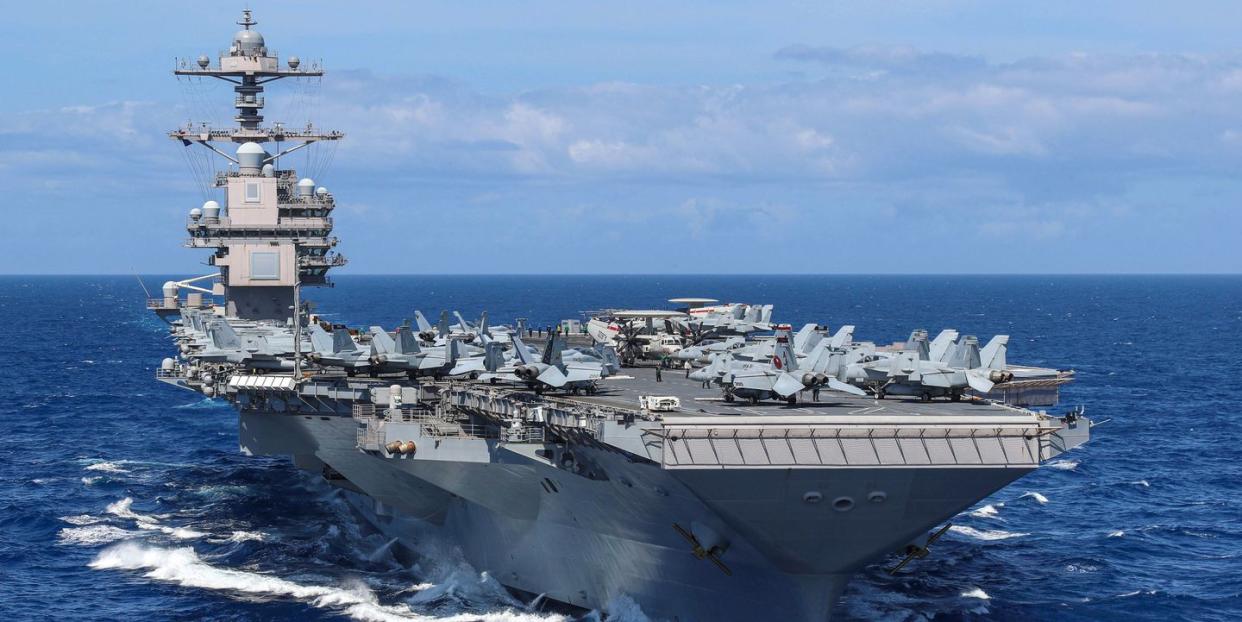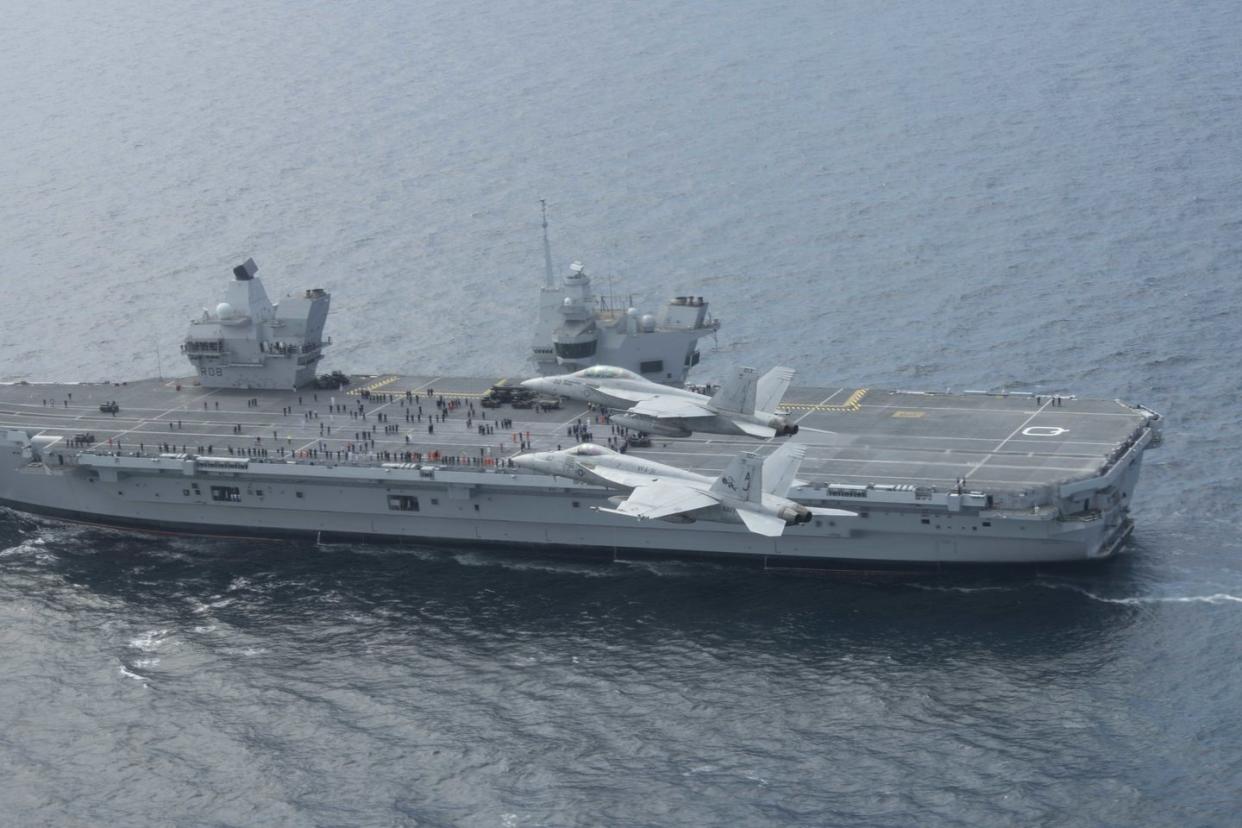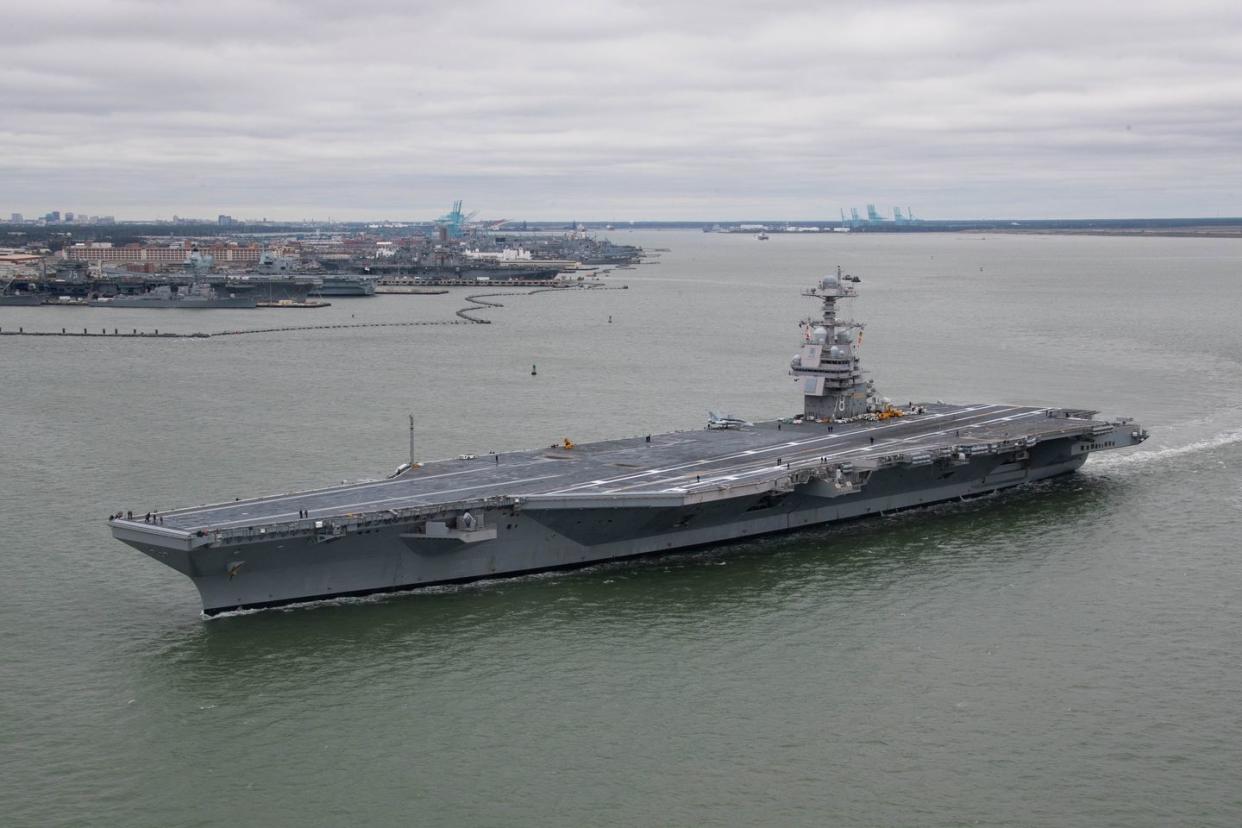It’s About Damn Time! USS Ford, America’s Newest Carrier, Finally Deploys

The aircraft carrier USS Gerald R. Ford departed Naval Station Norfolk last week on its maiden deployment.
Postponed for several years, the deployment will see the ship transit the Atlantic.
The carrier and her escorts will exercise with ships from other NATO navies, including new members Finland and Sweden.
It’s finally happened: Over five years after being commissioned, the aircraft carrier USS Gerald R. Ford is crossing the Atlantic on her first cruise. The first newly designed carrier in more than 40 years, Ford has seen substantial teething problems that delayed her initial deployment by several years. The carrier will flex her muscles for the very first time in training exercises with NATO forces in Europe.
✈️ Don’t miss any of our best-in-class military and defense news. Join our squad with Pop Mech Pro.
USS Ford departed Naval Station Norfolk last week as the centerpiece of Carrier Strike Group 12. CSG 12 also includes the guided-missile cruiser USS Normandy, destroyers Ramage, McFaul, and Thomas Hudner, the replenishment tanker USNS Joshua Humphreys, and the cargo/ammunition ship USNS Robert E. Peary. Also attached to the strike group is the Coast Guard cutter USCGC Hamilton.

Embarked upon the carrier is Carrier Air Wing 8, including four strike fighter squadrons: VFA-213 (“Blacklions”), VFA-31 (“Tomcatters”), VFA-37 (“Ragin’ Bulls”), and VFA-87 (“Golden Warriors”). Together, the squadrons operate approximately 40 F/A-18E and F/A-18F Super Hornet multi-role fighter jets.
The air wing also consists of VAQ-142 (“The Gray Wolves”) flying five EA-18G Growler electronic attack jets; VAW-124 (“Bear Aces”) flying four E-2 Hawkeye airborne early warning and control aircraft; VRC-40 (“Rawhides”) with two CMV-22 Osprey tiltrotor transports; and two helicopter squadrons, HSM-70 and HSC-90, with a total of 19 MH-60S and MH-60R helicopters.
USS Ford is the first ship in a new class of aircraft carriers—the first since the construction of USS Nimitz in the late 1960s. Ford’s construction began in 2008 and the Navy commissioned it in 2017; five years later, she’s finally undertaking her first deployment. At $13.3 billion, not including aircraft, weapons, or escorts, Ford is almost certainly the most expensive ship ever built.

Ford was packed with new technologies, 23 in all, including a new Dual Band Radar, four new electromagnetically powered aircraft catapults, and new aircraft arresting gear to help aircraft land. All three experienced significant issues during the ship’s construction and fitting-out periods, leading to delays and cost overruns. The eleven Advanced Weapon Elevators, also electromagnetically powered, proved the most difficult problems to solve, with the last of the elevators fixed just last year.
In 2021, a series of Full-Ship Shock Trials blasted USS Ford, detonating explosives near the ship to determine how it would react to a near-miss during combat. The carrier passed the shock trials—a sort of physical stress test for the ship and its equipment—including three underwater blasts made up of 40,000 pounds of explosives each.
USS Ford, her aircraft, and escorts are headed across the Atlantic for a series of exercises with NATO forces. The carrier strike group will practice with forces from Canada, Denmark, Finland, France, Germany, the Netherlands, Spain, and Sweden. Finland and Sweden are the alliance’s newest member states, joining after the Russian invasion of Ukraine in February 2022. According to the Navy, Ford is currently performing workups, “a series of underway periods conducting training, running drills, conducting flight operations, and completing certifications.”
Ford’s long, tortuous, expensive development period is finally over. Next in the queue is the second ship in the class, USS John F. Kennedy, followed by USS Enterprise and USS Doris Miller. Ford carriers will slowly replace aging Nimitz-class ships well into the 21st century, and hopefully the Navy and its shipbuilders have stomped out all the bugs. One thing is for sure: let’s never build a ship like that again.
You Might Also Like
